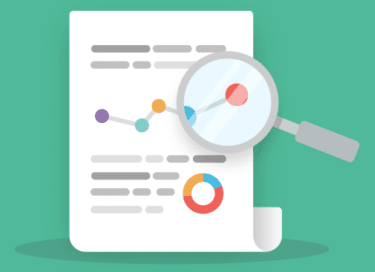How Combining Segmentation and Personalization Improves Your Brand Experience
When it comes to finding ways to meet people on their path-to-purchase through email marketing, customizing your messaging is incredibly effective. Many marketers rely solely on segmentation, which is one of the top tactics used in email campaigns due to its proven effectiveness. But using a combination of both–segmentation followed by personalization–can be a powerful way to address your subscribers’ needs and beat competitors. Before we get into the details of how these targeting techniques work best together, let’s take a look at each independently to fully understand their potential.
What is email segmentation?
Email segmentation is the process of separating your customers into groups based on the certain traits (e.g. personality, interests, habits, pain points) and factors (e.g. demographics, industry, income) they have in common.
Segmentation is what most marketers are using and some may even mistakenly consider personalization. It’s an effective way of organizing not only your customers, but also tailoring your messaging and how and when you communicate to them. It’s helpful to increase brand loyalty, learn more about your customers’ specific preferences, and drive conversions. Since each group is composed of customers with something in common, that also makes them more likely to respond to similar messaging or calls-to-action (CTA).
What is email personalization?
Email personalization is the process of using data to determine messaging for individual customers rather than a group with commonalities. The content sent to each speaks to the specific customers’s interests, habits, site behavior, demographic information, or shopping preferences.
Personalization makes customers feel like each message has been created with them in mind and addresses their specific needs and preferences as they move through the buying journey. Customers expect personalization and are increasingly willing to trade information for a more customized experience. Personalization is essential to increase both engagement and conversions.
When it comes to execution, creating these tailored messages should go beyond just inserting a subscriber’s first name. And frankly, this is just the tip of the iceberg for personalization potential. Not only that, customers expect more. Demonstrating you truly know and understand customers shows them you value their business and want to improve their experience. Carefully curated content resonates with audiences and keeps them coming back.
Combining segmentation with personalization
As marketers, we’re good at creating the processes that put people in segments, but to learn more and improve a customer’s experience, we must go the extra mile. Customer preferences, interests, and online behavior constantly change; it’s important to cater to these adjustments.
So how do the two work together to help improve your audience-first strategy? Carefully considering when and where to use each tactic helps you build a more robust customer profile. This not only allows for more personalization, but also gives you customer insights that deliver data to help your go-to-market strategy and identify products and services that customers are seeking.
Segmentation is your first step in creating relevant groups, primarily focused on the upper funnel. While still customized, segmentation isn’t as obvious to customers. By using relevant, high level content suggestions, you’re guiding the conversation while encouraging customers to narrow down their options, which in turn provides more data and future personalization. It’s also a great way to narrow down audiences that are more likely to respond and convert. Think of it as a fact-finding mission which helps everyone.
Personalization should follow. This adds an extra layer of expertise to segmentation now that you know more about your customers personally as well as their intent at the time. This is considered a mid- to lower-funnel strategy. By more directly addressing specific shopping preferences or pain points you have identified in their journey, you can now fine tune the messaging to appeal to their interests.
By leveraging segmentation and personalization, you can also provide sequential messaging based on where a customer seemed to fall off their path. For example, when segmenting audiences, you can tap into your product data feed to address window shoppers who can’t quite commit. These are people you can track who have browsed your site without clicking on anything specific, who viewed product categories but left before taking action. When using segmentation for customers with similarities, you can learn more about what they are looking for and better guide them through the process.
Once you’ve gained more insights, you can then address these customers with more specific products, color choices, and features, with the help of your data feed. By using automation to dynamically adjust messaging to address each person specifically, you are creating real connections that build brand loyalty and guide subscribers through the customer journey.
Marketers are constantly trying to work smarter in how they engage with audiences. As digital efforts continue to evolve, the process can feel more complicated. But really, the added sophistication creates opportunities for brands to make an impact. Consider that your messaging is meeting the subscriber with the right message, at the right time at their stage of the journey, offering content that speaks to their personal needs. Being tactical in this approach allows you to better connect, increase revenue, and build brand loyalty.
Email segmentation and email personalization shouldn’t be viewed as mutually exclusive. Instead, focus on how they can be used in tandem to appeal to the subscriber to create the best brand experience. Click here to see how Litmus Personalize, powered by Kickdynamic, empowers you to use email personalization to create individualized experiences at scale.

| Go beyond opens and clicks with Litmus Email Analytics Dig deeper than the data your email platform gives you, and better understand your audience and the performance of your email campaigns. |

Maria Coleman
Maria Coleman was a Senior Content Marketing Manager at Litmus
